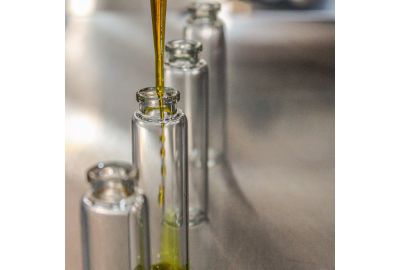The world of perfumery is an enchanting realm where fragrances have the power to evoke memories, reflect personalities, and become a part of one's identity. Creating your own perfume is a truly artistic and deeply personal endeavor that allows you to craft a scent that is uniquely yours. In this comprehensive guide, we'll walk you through the steps of creating your signature fragrance, from understanding the basics to crafting a harmonious blend that captures your essence.
Step 1: Learn the Basics of Perfumery
Before embarking on your perfume-making journey, it's essential to familiarize yourself with the fundamentals of perfumery:
Fragrance Notes: Understand the concept of fragrance notes—top, middle, and base. Each note contributes to the overall scent profile and evolves over time.


Fragrance Families: Explore the main fragrance families, such as floral, amber, woody, and fresh. This will help you identify the types of scents you're drawn to.
Ingredients: Learn about different perfume ingredients, including essential oils, absolutes, and aroma chemicals. Familiarize yourself with their characteristics and how they interact.


Step 2: Define Your Scent Vision
Before you start blending, have a clear idea of the type of fragrance you want to create:
Inspiration: Consider the emotions, memories, or experiences you want your perfume to evoke. It could be a place, a season, or a specific feeling.
Scent Profile: Decide on the primary notes and accords you want to incorporate. Will your fragrance be floral, woody, spicy, or a unique combination?
Intensity: Determine whether you want a light, everyday scent or a more intense fragrance for special occasions.
Step 3: Gather Your Materials
To create your perfume, you'll need:
Base Oils: These are carrier oils that dilute and carry the fragrance. Common options include jojoba oil, fractionated coconut oil, and grape seed oil.
Essential Oils and Aroma Chemicals: Select the fragrance ingredients that align with your scent vision. Start with a few key notes and build from there.
Glass Containers: Use glass bottles to mix and store your perfume. Make sure they are clean and properly sanitized.
Pipettes and Droppers: These tools help you accurately measure and blend your ingredients.
Step 4: Blending Your Perfume
Creating a perfume is like composing music; each ingredient plays a unique role in the symphony of scents:
Top Notes: Start with the top notes, which are the initial impressions of your perfume. These notes are typically light and fleeting.
Middle Notes: Move on to the middle notes, which form the heart of your fragrance. These notes last longer and provide depth and character.
Base Notes: Finish with the base notes, which give your perfume longevity and a solid foundation.
Step 5: Testing and Adjusting
Once you've blended your perfume, it's time to test and refine:
Skin Test: Apply a small amount of your perfume to your wrist and let it develop. Note how the scent evolves over time.
Balance: Pay attention to the balance of notes. Adjust the quantities if certain notes are overpowering or fading too quickly.
Waiting Game: Allow your perfume to macerate (rest) for a few days. Fragrances often mature and harmonize over time.
Step 6: Finalizing Your Perfume
Once you're satisfied with your blend, it's time to finalize your perfume:
Bottling: Transfer your perfume into a final, clean glass bottle. Make sure to label it with the ingredients and date.
Presentation: Consider creating a personalized label or packaging for your perfume. This adds a special touch to your creation.
Creating your own perfume is a journey of self-expression, creativity, and olfactory exploration. By following this guide and experimenting with different ingredients and combinations, you'll have the opportunity to craft a fragrance that is uniquely and authentically you. With each spritz, you'll carry a piece of your identity, a symphony of scents that tells your own fragrant story. So, embrace your inner perfumer and embark on the delightful adventure of crafting your very own signature scent.









